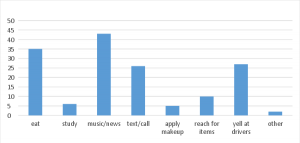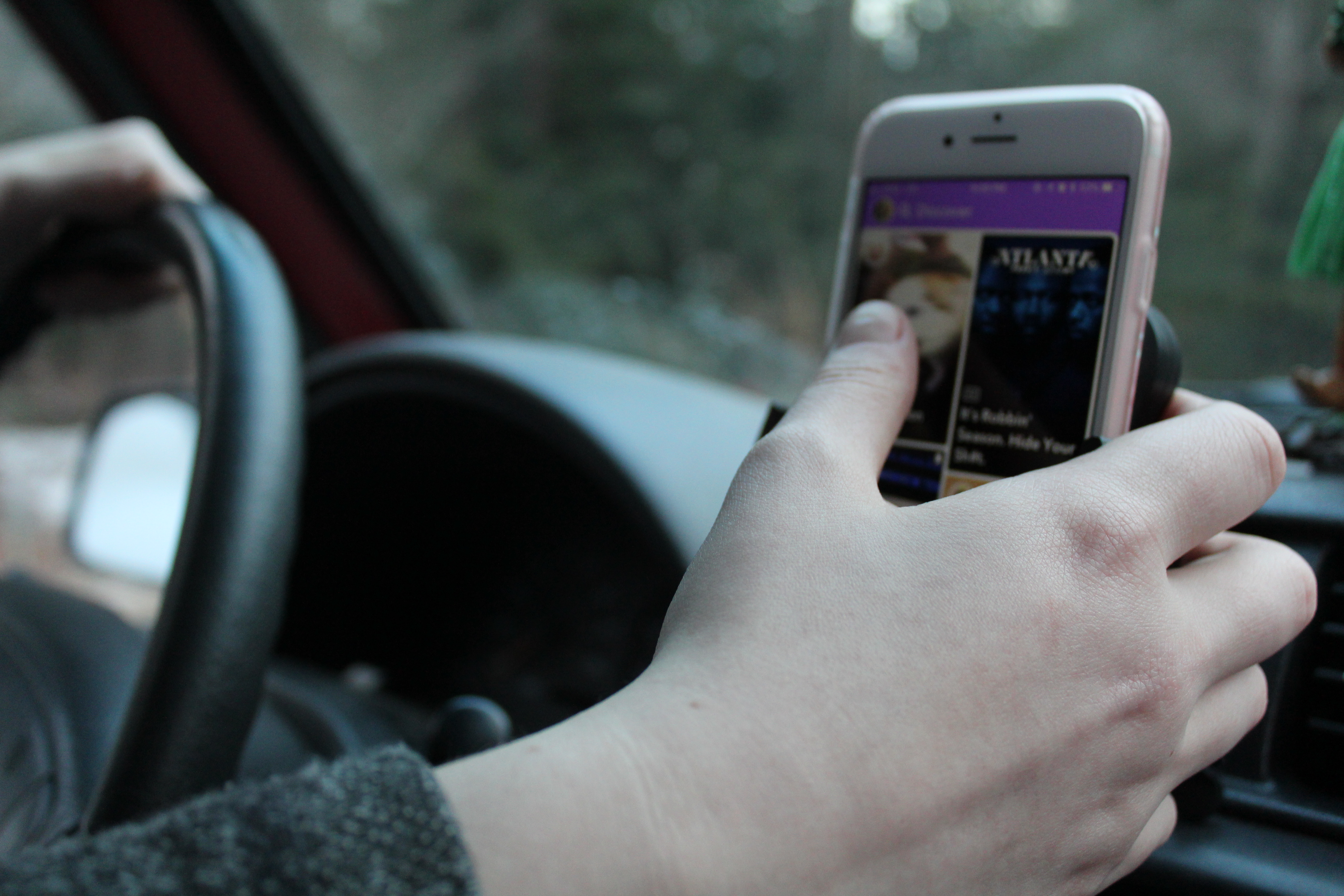“At least nine drivers are killed every day because of a distracted driver,” claims the Department of Motor Vehicles’ (DMV) website. Distractions for drivers’ have varied since the invention of the wheel—horses, conversations, billboards, radios, built-in car phones, then iPods and cell phones. Technology may be partly to blame, but it is also attempting to solve the problem.
Apple’s “Do Not Disturb While Driving” app was unveiled on September 19th. According to the company website, the app allows the updated operating system, iOS 11, to run in the background and detect when the operator is driving.
The screen blacks-out, blocking texts, calls and also push notifications from games and social media, something other apps may not do, the website explained. Music and navigation still function and drivers can set up preferences to allow for emergency break-through calls. Parents can also set controls for their teensl.
In a survey of 88 Mount Wachusett students, 43 percent reported being “serene and scenic” drivers, while 18 percent put safety first and 30 percent were self-proclaimed Speed Racers. A wedge of 9 percent said it depended on the situation.
44 percent of students admitted they do not watch the road, compared to 41 percent who do. 15 percent paid attention sometimes. The graph below shows what habits take place in cars.

Sixty-two percent of the students have a phone application to insure safe driving. Such apps may come from a service provider like the new updated Apple iOS 11 “Do Not Disturb While Driving” or the more common hands-free system like Bluetooth or Bixby, but only 30 percent of the students actually use it.
“I love the new iOS update,” remarked nursing student Kimberly Cook, who uses Siri if she has to text. She said the new driving feature is easy to use. “The new download comes on and you have to choose to allow it or not. I believe you can go back to settings and disable. It works great!”
Another app user commented, “I use it whether I’m driving or not.”
37 percent choosing not to use their safety app said they did not want to miss emergency calls, especially students with children, while 51 percent felt confident curbing impulses.
“My phone does [have an app], but I do not use it because I worry it might think I am driving when I am not,” said one survey taker, who raised a point against unnecessary penalties or being locked out of phone use.
A slim 12 percent confessed they either did not own a phone or did not know how to use an app.
A majority of the 38 percent without an app were not interested in downloading one for similar reasons.
“It should be more about self-control than being limited,” one pointed out. Others put their phones in the backseat or did not look at them.
“It’s something to look forward to once you get to your destination,” wrote another. “I always drive with someone so they will usually text for me.”
“I have to use my phone as a speedometer,” admitted one commenter.
A few others were not aware such applications existed but shown an interest in downloading it.
“Yeah!” one survey taker said. “Can’t trust my impulsive self.” While another added, “I would enjoy that so nobody could bother me unless it was an emergency.”
“People should be encouraged to use these apps,” Professor of Sociology Julie Capozzi said. “Many do not know about them. It would be nice if the phone companies could let buyers know about these apps when purchasing phones.”
Capozzi added, “The phone is a serious issue when driving and involves many needless accidents and deaths.” She pointed to the mass.gov website for facts.
According to the site, 3,477 people were killed and almost 400,000 were hurt in crashes because of distracted driving in 2015. In April 2017, Mass.gov launched the “Drive Present” campaign during National Distracted Driving Awareness month and declared texting the most dangerous distraction behind the wheel. Looking at a phone for five seconds at 55 miles per hour equals closing one’s eyes and driving the length of football field, mass.gov reported.
“Most adolescents think, this won’t happen to me. I won’t get in a car crash, but it’s a crucial issue,” Capozzi said.
A variety of safe driving apps are designed with teens in mind. An incentive-based app from Toyota, yet available for anyone regardless of vehicle, is called “Safe and Sound.” According to their website, by syncing the Spotify accounts of parents and teens, it blocks texts and calls once the driver exceeds nine miles per hour. If the teen speeds, the playlist pops into parent mode and blasts undesirable tunes.
Another motivation app is LifeSaver, which newly updated on October 9th. According to its site, lifesaver-app.com, the program rewards points for every phoneless drive completed. Drivers can cash in for iTunes or other prizes. LifeSaver runs by monitoring GPS and blocks texts or calls while allowing music and maps to function hands free as long as they are set up before each trip. The app alerts parents and loved ones when the driver has arrived safely or has turned off the features.
Dmv.org, whose slogan is “One distraction can steal your reaction,” invites drivers to click on a pledge to drive safer. The site also compared three other safe driving applications with LifeSaver. AT&T DriveMode can be set up to automatically on iOS or android to blocks calls and texts once the driver hits 15 miles per hour. It also lets parents know when the app is deactivated and parents can set up private prizes when safe driving is achieved.
Insurance company and vehicle manufacturer apps are designed to save drivers money but may not block phone use. These programs monitor habits like speed, braking, time of day, sharp turns and distance (shorter trips award more points). The State Farm website offers the “Drive Safe and Save” app and awards subscribers a 5 percent discount off their premium at sign-up, mailing a Bluetooth beacon to sync with it. State Farm compares data to other drivers in the same area and age bracket.
According to Progressive.com, the snap-in plug or phone app that monitors the same criteria as well are offered services. Ford’s website detailed the SYNC App Link program, “DriversScore,” which lets drivers opt to connect the program to their phones to share safe driving habits with their insurance company for discounts.

Comments are closed.